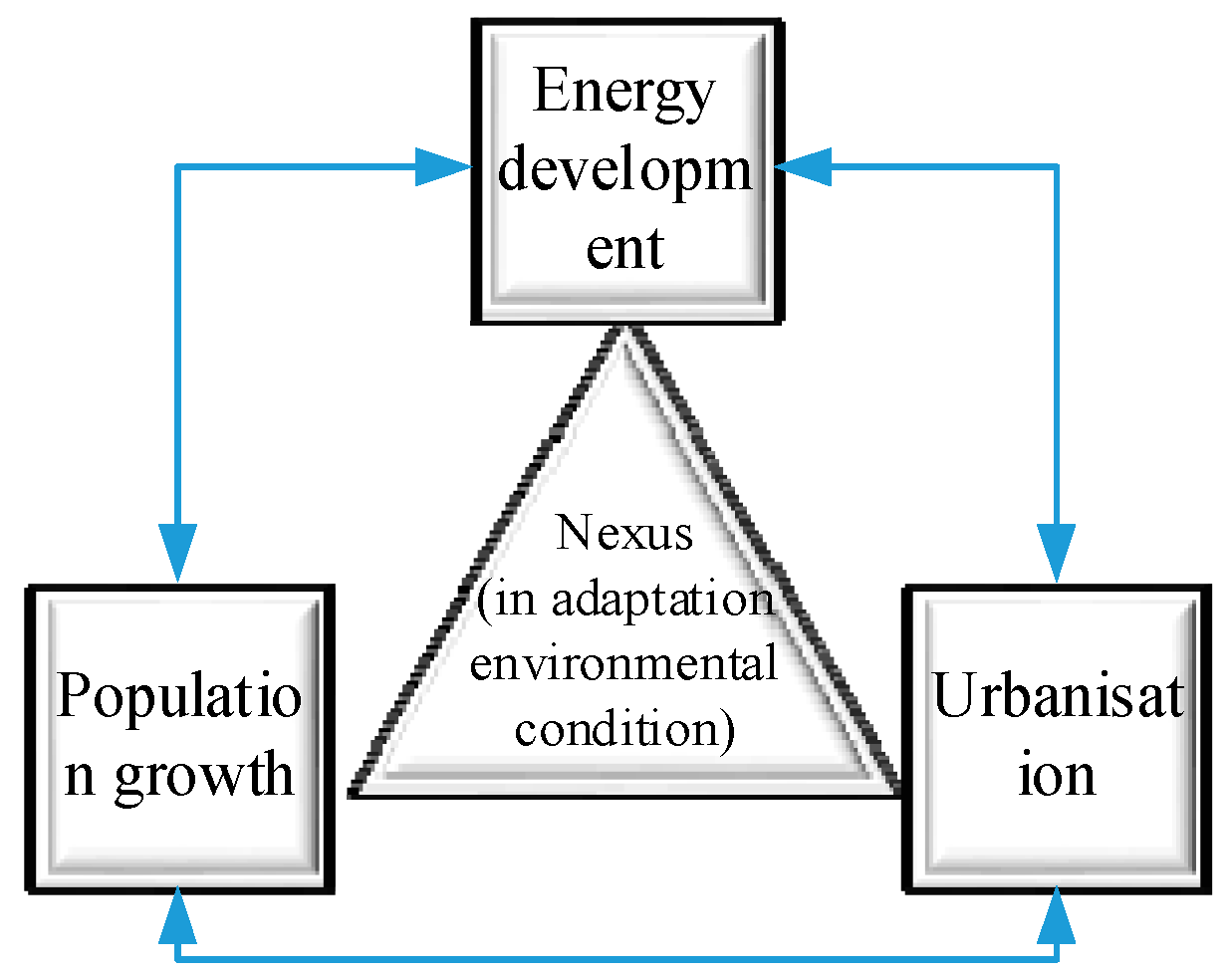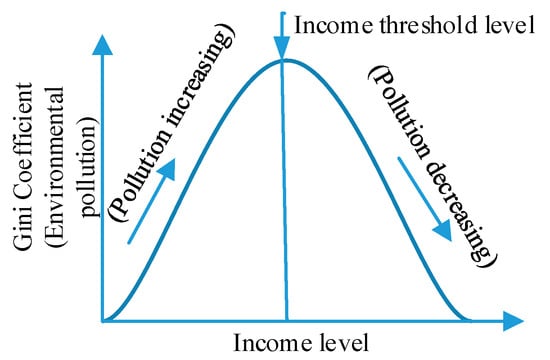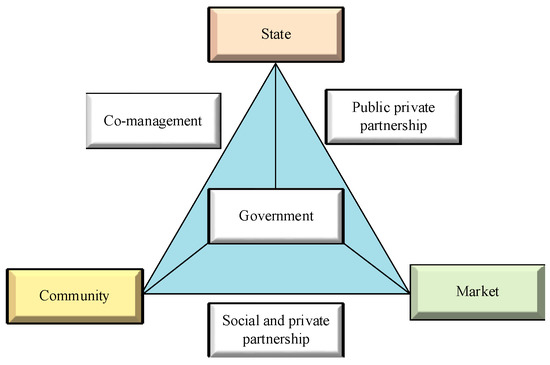You're using an outdated browser. Please upgrade to a modern browser for the best experience.
Please note this is an old version of this entry, which may differ significantly from the current revision.
Climate change occurs through a complex set of interactive driving forces. According to the Intergovernmental Panel on Climate Change sixth assessment report (AR6; https://wg1.ipcc.ch/index.php/ar6/sixth-assessment-report-ar6; Accessed on 5 November 2022), human activity is the main driving force of climate change, whereas others contend that natural factors are also main causes.
- climatological parameters
- driving forces
- water resources
1. Introduction
To make water reserves more sustainable, it is necessary to determine how water quantity and quality would vary. Simulated data from regional models are a standard tool for predicting future water resources. Uncertainty and variability across models typically hinder the downscaling of large-scale water supply system predictions to small watersheds for water resource management decisions [1][2]. There is certain unanimity in stream behavior in different regions [3][4][5]. However, this is not the case for watershed effects. According to Fatichi et al. [6], natural climate variation may be more critical for variations in stream flow than systematic variability. Land use and anthropogenic variables also play a role in sustainable water resource management [5][7][8][9][10]. The determination of the impact of climate on stream flows has been a challenge in previous regional research [11][12][13].
Climate change affects the hydrological cycle by affecting precipitation, evapotranspiration, and soil moisture. A World Metrological Organization (WMO) report (2021) indicated that the average global temperature has increased by 0.8 °C since 1880 (https://library.wmo.int/doc_num.php?explnum_id=11178; Accessed on 5 November 2022). In 2021, the average global temperature was around 1.11 ± 0.13 °C above the level of 1850–1900 but less warm than some recent years. However, additional precipitation is dispersed irregularly across the planet. Certain parts of the globe may experience significant reductions in precipitation or significant seasonal variations. Thus, research on the impacts of climate change on diverse hydrological components is vital [14][15][16]. Meko and Woodhouse (2005) observed the Sacramento and upper Colorado river basins [17]. They discovered that the seasonal flow from melting snow in the spring has decreased over time. Different studies confirmed this result by employing complicated statistical approaches and analyzing other basins [18][19][20].
Climate change alters the overall discharge regime of river basins and modifies the stream and base flow in channel systems. Establishing a multi-model set by considering multiple simulations through a series of global climate models (GCMs) has become a common approach for understanding climate disorders [21][22]. Arnell (1999) determined that climate change significantly impacts flood risk [23]. Previous studies have examined the flooding frequency over climate change using different projected climate scenarios [24][25]. However, the impact of climate change on hydrological regimes and river flows at the catchment scale is different from that at the regional scale [26][27][28].
2. Driving Forces behind Climate Change
Climate change occurs through a complex set of interactive driving forces. According to the Intergovernmental Panel on Climate Change sixth assessment report (AR6; https://wg1.ipcc.ch/index.php/ar6/sixth-assessment-report-ar6; Accessed on 5 November 2022), human activity is the main driving force of climate change, whereas others contend that natural factors are also main causes. This ambiguity is due to inadequate data and methods to understand the phenomenon [29]. Both natural and human forces influence the Earth’s temperature, but the long-term trend observed over the last century can only be explained by the impact of human activities on the climate. Natural phenomena such as fluctuations in solar radiation and volcanic eruptions also have an impact on the Earth’s temperature. Similarly, Milankovitch cycles and El Niño Southern Oscillation (ENSO) are two other natural phenomena that are likely to change the Earth’s temperature. Milankovitch cycles occur as the Earth orbits the Sun, and its route and axis tilt might alter slightly. El Niño Southern Oscillation (ENSO) is a pattern of shifting Pacific Ocean water temperatures (https://www.metoffice.gov.uk/weather/climate-change/causes-of-climate-change; Accessed on 26 October 2022).
2.1. Population Growth
The human population increased from 1 billion to 7 billion in less than two centuries. Population growth has a direct relationship with the urbanization rate, and the growth of the urbanization rate in the past few decades is unprecedented. The two continents (Europe and Africa) are projected to be 56% and 64% urbanized, respectively, by the middle of this century [30][31]. In adaptation to environmental conditions, the nexus is shown in Figure 1.

Figure 1. Conceptual diagram showing the nexus among population growth, urbanization, and energy development in the context of climate variability.
2.2. Technological Development
The evolution of technology has increased the use of fossil fuels, which is a major cause of the increase in the concentrations of CO2 and other greenhouse gases (GHGs). Understanding the environmental impacts of technological changes is essential for sustainable economic growth. Popp et al. [32] indicated that technology transition has largely affected the environment. They conjectured that advanced technology would escalate air pollution. Technological advancement is the most important part in projecting future impact on global environmental challenges, such as climate vulnerability [32]. Climate change is directly linked to air pollutants. Certain pollutants, such as black carbon and ozone, contribute to global warming by trapping heat in the atmosphere (Figure 2).

Figure 2. Connection between air pollution and climate change.
2.3. Economic Growth
The nexus between economic development (GDP) and environmental sustainability has been long discussed. In particular, environmental objectives such as limiting global warming below a threshold (2 °C or 1.5 °C) have been challenging owing to continuous economic growth [33]. Industrial growth has recently negatively impacted the environment and increased GHG concentrations, toxic pollutants, and chemical spills [34]. Wu et al. [35] hypothesized that income inequality and per capita income have an inverted U-shaped relationship. This indicates that the degree of environmental pollution increases as economic growth approaches the threshold income level and then declines at the same rate (Figure 3).

Figure 3. The relationship between per capita income (PCI) and environmental pollution.
2.4. Role of Institutions
It is vital to effectively address the role of institutions (particularly local ones) in preparation for adaptation to climate variations if this adaptation is to help the most susceptible social groups. Previous research indicates that the success of adaptation normally depends on the type of existing institutions [36]. Conversely, previous research also highlights the factors that resist adaptation and indicates institutional hurdles as a main cause of ineffective adaptation to climate variation [37][38][39][40]. The failure of institutions to adapt to climate change has aggravated their climate vulnerability (Figure 4).
Table 1. Summary of recent studies on major climate variability-forcing drivers.
| Driver | Major Findings | Methodologies/Techniques | References |
|---|---|---|---|
| Population growth/Urbanization |
|
|
[30] [41] [42] [43] [44] |
| Technologic development |
|
|
[45] [46] [32] [47] |
| Economic growth |
|
|
[48] [49] [50] [51] |
| Institutions |
|
|
[52] [53] [54] [55][56] |

Figure 4. Institutional collaboration arrangements considering climate variability (aftser [38]).
This entry is adapted from the peer-reviewed paper 10.3390/hydrology9110203
References
- Milly, P.C.D.; Dunne, K.A.; Vecchia, A.V. Global pattern of trends in streamflow and water availability in a changing climate. Nature 2005, 43, 347–3508.
- Moglen, G.E.; Rios Vidal, G.E. Climate change and storm water infrastructure in the mid-Atlantic region: Design mismatch coming? J. Hydrol. Eng. 2014, 19, 4014026.
- Chen, H.; Xu, C.-Y.; Guo, S. Comparison and evaluation of multiple GCMs, statistical downscaling and hydrological models in the study of climate change impacts on runoff. J. Hydrol. 2012, 434, 36–45.
- Chai, J.C.; Shen, S.L.; Geng, X. Effect of initial water content and pore water chemistry on intrinsic compression behavior. Mar. Georesour. Geotechnol. 2019, 37, 417–423.
- Lin, S.S.; Shen, S.L.; Lyu, H.M.; Zhou, A. Assessment and management of lake eutrophication: A case study in Lake Erhai, China. Sci. Total Environ. 2021, 751, 141618.
- Fatichi, S.; Rimkus, S.; Burlando, P.; Bordoy, R. Does internal climate variability overwhelm climate change signals in streamflow? The upper Po and Rhone basin case studies. Sci. Total Environ. 2014, 493, 1171–1182.
- Lyu, H.M.; Shen, S.L.; Zhou, A.; Zhou, W.H. Flood risk assessment of metro systems in a subsiding environment using the interval FAHP–FCA approach. Sustain. Cities Soc. 2019, 50, 101682.
- Wu, M.; Hu, Y.; Wu, P.; He, P.; He, N.; Zhang, B.; Zhang, S.; Fang, S. Does soil pore water salinity or elevation influence vegetation spatial patterns along coasts? A case study of restored coastal wetlands in Nanhui, Shanghai. Wetlands 2020, 40, 2691–2700.
- Zhang, X.; Dong, Q.; Costa, V.; Wang, X. A hierarchical Bayesian model for decomposing the impacts of human activities and climate change on water resources in China. Sci. Total Environ. 2019, 665, 836–847.
- Lin, S.S.; Shen, S.L.; Zou, A.; Zhang, N. Ensemble model for risk status evaluation of excavation system. Autom. Constr. 2021, 132, 103943.
- Labat, D.; Godderis, Y.; Probst, J.L.; Guyot, J.L. Reply to comment of Legates et al. Adv. Water Resour. 2005, 28, 1316–1319.
- Labat, D.; Goddéris, Y.; Probst, J.L.; Guyot, J.L. Evidence for global runoff increase related to climate warming. Adv. Water Resour. 2004, 27, 631–642.
- Wu, H.N.; Shen, S.L.; Chen, R.P.; Zhou, A. Three-dimensional numerical modelling on localized leakage in segmental lining of shield tunnels. Comput. Geotech. 2020. 122, 103549.
- Ranjan, S.P.; Kazama, S.; Sawamoto, M. Effects of climate and land use changes on groundwater resources in coastal aquifers. J. Environ. Manag. 2006, 80, 25–35.
- Zheng, Q.; Shen, S.L.; Zhou, A.; Lyu, H.M. Inundation risk assessment based on G-DEMATEL-AHP and its application to Zhengzhou flooding disaster. Sustain. Cities Soc. 2022, 86, 104138.
- Westerberg, I.K.; Gong, L.; Beven, K.J.; Seibert, J.; Semedo, A.; Xu, C.Y.; Halldin, S. Regional water balance modelling using flow-duration curves with observational uncertainties. Hydrol. Earth Syst. Sci. 2014, 18, 2993–3013.
- Mmeko, M.; Woodhouse, A. Tree-ring footprint of joint hydrologic drought in Sacramento and Upper Colorado river basins, western USA. J. Hydrol. 2005, 308, 196–213.
- Fox, J.P.; Mongan, T.R.; Miller, W.J. Trends in freshwater inflow to san francisco bay from tue sacramento-san joaquin delta. JAWRA J. Am. Water Resour. Assoc. 1990, 26, 101–116.
- Shelton, M.L. Seasonal hydroclimate change in the sacramento river basin, California. Phys. Geogr. 1998, 19, 110–118.
- Shen, S.L.; Atangana Njock, P.G.; Zhou, A.; Lyu, H.M. Dynamic prediction of jet grouted column diameter in soft soil using Bi-LSTM deep learning. Acta Geotech. 2021, 16, 303–315.
- Xu, Y.; Gao, X.; Giorgi, F. Upgrades to the reliability ensemble averaging method for producing probabilistic climate-change projections. Clim. Res. 2010, 41, 61–81.
- Christierson, B.v.; Vidal, J.P.; Wade, S.D. Using UKCP09 probabilistic climate information for UK water resource planning. J. Hydrol. 2012, 424–425, 424–425.
- Arnell, N.W. The effect of climate change on hydrological regimes in Europe: A continental perspective. Glob. Environ. Chang. 1999, 9, 5–23.
- Karlsson, I.B.; Sonnenborg, T.O.; Refsgaard, J.C.; Trolle, D.; Børgesen, C.D.; Olesen, J.E.; Jeppesen, E.; Jensen, K.H. Combined effects of climate models, hydrological model structures and land use scenarios on hydrological impacts of climate change. J. Hydrol. 2016, 78, 535.
- Lyu, H.M.; Shen, S.L.; Zou, A.; Yang, J. Perspectives for flood risk assessment and management for mega-city metro system. Tunn. Undergr. Space Technol. 2019, 84, 31–44.
- Meng, W.L.; Shen, S.L.; Zhou, A. Investigation on fatal accidents in Chinese construction industry between 2004 and 2016. Nat. Hazards 2018, 94, 655–670.
- Liu, J.; Curry, J.A. Accelerated warming of the Southern Ocean and its impacts on the hydrological cycle and sea ice. Proc. Natl. Acad. Sci. USA 2010, 107, 14987–14992.
- Liu, X.X.; Shen, S.L.; Zhou, A.; Xu, Y.S. Evaluation of foam conditioning effect on groundwater inflow at tunnel cutting face. Int. J. Numer. Anal. Methods Geomech. 2019, 43, 463–481.
- Wang, G.; Yang, P.; Zhou, X. Identification of the driving forces of climate change using the longest instrumental temperature record. Sci. Rep. 2017, 7, 46091.
- Salim, R.; Rafiq, S.; Shafiei, S.; Yao, Y. Does urbanization increase pollutant emission and energy intensity? Evidence from some Asian developing economies. Appl. Econ. 2019, 51, 4008–4024.
- Avtar, R.; Tripathi, S.; Aggarwal, A.K. Assessment of energy-population-urbanization nexus with changing energy industry scenario in India. Land 2019, 8, 124.
- Popp, D.; Newell, R.G.; Jaffe, A.B. Energy, the environment, and technological change. Handb. Econ. Innov. 2010, 2, 873–937.
- Antal, M.; Van Den Bergh, J.C.J.M. Green growth and climate change: Conceptual and empirical considerations. Clim. Policy 2016, 16, 165–177.
- Peng, Y.S.; Lin, S.S. Local responsiveness pressure, subsidiary resources, green management adoption and subsidiary’s performance: Evidence from taiwanese manufactures. J. Bus. Ethics 2008, 79, 199–212.
- Wu, X.; Shen, Z.; Liu, R.; Ding, X. Land use/cover dynamics in response to changes in environmental and socio-political forces in the upper reaches of the Yangtze river, China. Sensors 2008, 8, 8104–8122.
- Agrawal, A. Local institutions and adaptation to climate change. In Social Dimensions of Climate Change: Equity and Vulnerability in a Warming World; World Bank: Washington, DC, USA, 2010; Volume 2, pp. 173–178.
- Mandryk, M.; Reidsma, P.; Kartikasari, K.; van Ittersum, M.; Arts, B. Institutional constraints for adaptive capacity to climate change in Flevoland’s agriculture. Environ. Sci. Policy 2015, 48, 147–162.
- Lemos, M.C.; Rood, R.B. Climate projections and their impact on policy and practice. Wiley Interdiscip. Rev. Clim. Chang. 2010, 1, 670–682.
- Heath, Y.; Gifford, R. Free-market ideology and environmental degradation: The case of belief in global climate change. Environ. Behav. 2006, 38, 48–71.
- Happer, C.; Philo, G. The role of the media in the construction of public belief and social change. J. Soc. Political Psychol. 2013, 1, 321–336.
- Tjernström, E.; Tietenberg, T. Do differences in attitudes explain differences in national climate change policies? Ecol. Econ. 2008, 65, 315–324.
- Cui, L.; Shi, J. Urbanization and its environmental effects in Shanghai, China. Urban Clim. 2012, 2, 1–15.
- Satterthwaite, D. The implications of population growth and urbanization for climate change. Environ. Urban. 2009, 21, 545–567.
- Vörösmarty, C.J.; Green, P.; Salisbury, J.; Lammers, R.B. Global water resources: Vulnerability from climate change and population growth. Science 2000, 289, 284–288.
- Li, M.; Wang, Q. Will technology advances alleviate climate change? Dual effects of technology change on aggregate carbon dioxide emissions. Energy Sustain. Dev. 2017, 41, 61–68.
- Elimelech, M.; Phillip, W.A. The future of seawater desalination: Energy, technology, and the environment. Science 2011, 333, 712–717.
- Gouvêa, J.R.F.; Sentelhas, P.C.; Gazzola, S.T.; Santos, M.C. Climate changes and technological advances: Impacts on sugarcane productivity in tropical southern Brazil. Sci. Agric. 2009, 66, 593–605.
- Liang, W.; Yang, M. Urbanization, economic growth and environmental pollution: Evidence from China. Sustain. Comput. Inform. Syst. 2019, 21, 1–9.
- Drews, S.; Antal, M.; van den Bergh, J.C.J.M. Challenges in assessing public opinion on economic growth versus environment: Considering European and US data. Ecol. Econ. 2018, 146, 265–272.
- Balsalobre-Lorente, D.; Shahbaz, M.; Roubaud, D.; Farhani, S. How economic growth, renewable electricity and natural resources contribute to CO2 emissions? Energy Policy 2018, 113, 356–367.
- Andrée, B.P.J.; Chamorro, A.; Spencer, P.; Koomen, E.; Dogo, H. Revisiting the relation between economic growth and the environment; a global assessment of deforestation, pollution and carbon emission. Renew. Sustain. Energy Rev. 2019, 114, 109221.
- Naab, F.Z.; Abubakari, Z.; Ahmed, A. The role of climate services in agricultural productivity in Ghana: The perspectives of farmers and institutions. Clim. Serv. 2019, 13, 24–32.
- Islam, M.T.; Nursey-Bray, M. Adaptation to climate change in agriculture in Bangladesh: The role of formal institutions. J. Environ. Manag. 2017, 200, 347–358.
- Mubaya, C.P.; Mafongoya, P. The role of institutions in managing local level climate change adaptation in semi-arid Zimbabwe. Clim. Risk Manag. 2017, 16, 93–105.
- Agrawal, A. The Role of Local Institutions in Adaptation to Climate Change; World Bank: Washington, DC, USA, 2008; Volume 17, p. 28274.
- Cooper, M.D.; Phillips, R.A. Exploratory analysis of the safety climate and safety behavior relationship. J. Saf. Res. 2004, 35, 497–512.
This entry is offline, you can click here to edit this entry!
